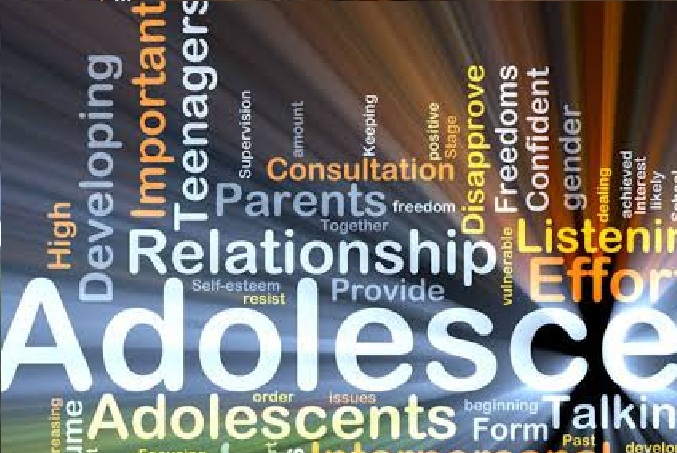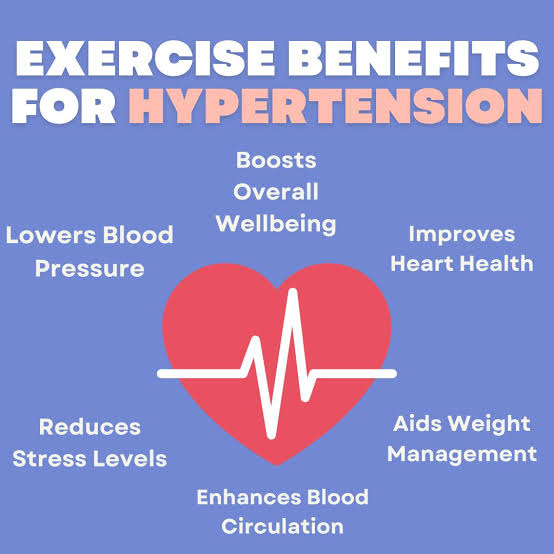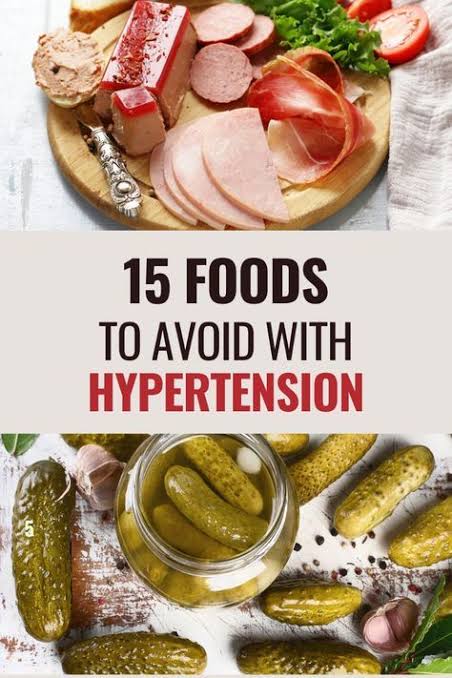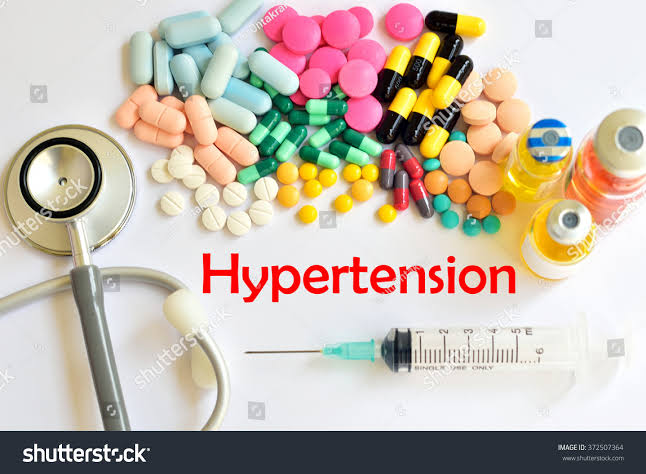A detailed guide of Adolescent Concerns for parents, teachers, and counsellors to understand adolescent issues such as emotional instability, academic pressure, social anxiety, and risky behaviour. Learn how to effectively support and guide teens.
Introduction
Adolescence is a transformative stage filled with growth, discovery, and challenges. As teenagers transition from childhood to adulthood, they face a unique set of concerns that impact their mental, emotional, and physical well-being. Understanding these issues of Adolescent Concerns is crucial for parents, educators, and counsellors to provide effective support. This article dives deep into the most relevant adolescent concerns today, including mental health, peer pressure, identity struggles, and many more.
General Characteristics of Adolescent Concerns
The stage of adolescence has certain characteristics that distinguish it from the periods preceding or following it during the life span.
- It is a significant period of development because of its immediate as well as long term effects upon attitudes, behaviour and personality.
- It is a transitional period in which the individual experiences confusion or vagueness about his/her role.
- It is a period of change, initially marked by physical changes and associated changes in interest, attitude, and behaviours. Changes are rapid in the early part and slow down during late adolescence.
- It is considered as a problem age as adolescents often find it difficult to cope with the stressors commonly associated with stage of life.
- It is the time of searching for and shaping their identity. During early adolescence, adolescents conform to group norms but gradually they begin to crave identity. They commonly experience identity crisis.
- It is a time of unrealism. It may be due to heightened emotionality which makes adolescents nurture unrealistic aspirations about themselves, their friends and family members.
- It is the threshold of adulthood. Adolescents are often eager to create an impression of adulthood. They often concentrate on behaviour patterns commonly associated with adulthood: smoking, drinking, using drugs or involving in sexual activity etc.

Key Aspects, of Adolescent Concerns and Management
Physical Aspect
This stage is associated with significant bodily changes both internal as well as external in nature. This includes puberty and related changes in both boys and girls in two fundamental aspects basically Indentify Confusion and another one is Body image and Apperance.
Identity Confusion
Teenagers frequently struggle with questions like “Who am I?” and “Where do I belong?” They grapple with their gender identity, sexual orientation, cultural roles, and personal beliefs wich are very important issue of Adolescent Concerns. This identity search can cause stress, isolation, or rebellion if not guided properly.

Body Image and Appearance
With social media showcasing idealized beauty standards, adolescents become self-conscious about their looks. Body shaming, low self-esteem and eating disorders like anorexia and bulimia are rising among teens, especially girls which is very important issue of Adolescent Concerns today.

Characteristics
External Changes of Adolescent Concerns
- Change in height (an average girl reaches her mature height by the age of sixteen or seventeen and an average boy reaches his mature height by eighteen or nineteen)
- Changes in weight which follows a similar timeline to that of the changes in height
- Changes in body proportion for example broadening and lengthening of trunks so that the limbs no longer appear to be long
- Development of sex organs in both the sexes which ultimately become mature in late adolescence
- Development of secondary sexual characteristics which acts as a distinguishing feature between the two sexes like growth of facial hair in males and breast enlargement in females, development of hair in the pubic region etc.
Internal Changes of Adolescent Concerns
- The digestive system undergoes changes which includes enlargement of stomach, development of intestine and other organs
- Changes in the circulatory system take place which includes growth of heart, lengthening and thickening of the walls of the blood vessels.
- The endocrine system also undergoes significant changes. The increased activity of the gonads at puberty results in temporary imbalance of the whole endocrine system in the early adolescence. The sex glands develop rapidly and become functional and finally reach mature size at late adolescence. The respiratory system and the body tissues also grow up to maturity during this stage.
Concerns
- Many adolescents do not experience body catharsis or satisfaction with their body parts. They are not happy with their body (shape, size and proportion) resulting in unfavourable self-concept and low self-esteem.

- Menstruation and menarche is another area of concern for adolescent girls because of the symptoms of physical discomfort associated with it such as cramps, headaches, backaches, lower abdominal pain, swollen ankle, breast tenderness and emotional changes such as mood swings, depression, irritability etc.
- Most girls react in a perplexed manner when they experience the first menstrual period since most are unaware of it till it occurs.
- Acne and other skin eruptions are a source of concern for both male and female adolescents as they realise that it affects their physical attractiveness.
- Tendency towards obesity is another source of concern during early adolescence. This is spurred by consumption of junk food. However, in the later stage, they try to slim down and often get into vigorous dieting which is also accompanied by negative health consequences.
- Physical attractiveness is the most significant area of concern during late adolescence because they realize that this factor plays an important role in social relationships. Therefore most adolescents show great interest in improving their appearance.
- Masturbation and nightfall is another area of concem for adolescent boys. They have a strong feeling of guilt associated with these issues therefore feel extremely uncomfortable about it.
- Concerns about genitalia (for example size of penis) and secondary sexual characteristics (breast size and shape) is also common.
Management
- The would be adolescents should be made ware about the physical changes associated with this stage, their causes and expected outcomes so that they do not become perplexed after experiencing the changes.
- They should be made to realize that these changes are temporary and it would ultimately lead to complete development to maturity.
- Their parents, teachers, family members should help them in every possible way to adjust to this transitional phase. It is important for them as well to develop a positive attitude towards this stage of life.
Emotional Aspect
Mental Health Issues
Teenagers today are increasingly vulnerable to mental health disorders such as anxiety, depression, and mood swings. Academic stress, family conflict, and social comparison through social media can lead to emotional instability. Many teens suffer silently due to stigma or lack of access to counselling.

Characteristics
Heightened Emotionality
- Adolescence is regarded as a period of storm and stress a time of heightened emotional tension.
- They experience emotional instability in the process of making adjustments to new patterns of behaviour
- Their emotions are intense, uncontrolled and seemingly irrational
Emotional Patterns
- The emotional patterns of adolescence are similar to that of childhood but differ in terms of the stimuli that give rise to it and the degree of control one can exercise over one’s emotion.
- The patterns of emotional expression also differ from that of childhood in the sense that instead of having temper tantrums, they express their anger by sulking, refusing to speak or loudly criticizing those who have angered them.
Emotional Maturity
- Emotional maturity is attained by the end of adolescence whereby the individual learns to express negative emotions in a socially acceptable manner and is capable of assessing a situation carefully before reacting to it unthinkably.
Concerns
- Problems in interpersonal relationships (with parents, family, romantic partners) affects the emotional well-being of adolescence is an important area of concern
- Aggressive emotional outburst which results from inability to express emotions in an appropriate manner often forces the adolescent to lace adverse consequences due to their behaviour at home and school.
Management
- Encouraging the adolescent to express their emotions in an age appropriate and socially acceptable manner is important in order to develop emotional maturity, in this regard inappropriate emotional outbursts should be discouraged through punishments and negative reinforcement.
- Helping and guiding the adolescent to deal with emotional crisis and cope up with stress
- Encouraging the adolescents to use emotional catharsis to clear their system of pent up emotions. They can do so through crying, strenuous physical exercise, laughing etc.
Motivating the adolescents to discuss their problems with a trusted person who is older in age and mature (for example parent, teacher elder siblings) which would help them to get a better perspective to the situation before reacting to it emotionally
Social Aspects
In respect of social aspects of the Adolescent Concerns basically two form likely Peer Pressure and another Relationship Challenges.
Peer Pressure
In respect of Adolescent Concerns ,adolescents often feel the need to conform to their peer groups. This can result in risky behaviors like underage drinking, smoking, drug use, or inappropriate sexual activity. Peer influence can undermine personal values and lead to poor decision-making.
Relationship Challenges
Teens face emotional ups and downs in their friendships and romantic relationships. Issues like jealousy, betrayal, breakups, or lack of trust can deeply affect their emotional state and self-worth
Characteristics
Increased influence of Pear Group
- Adolescents prefer spending a considerably large amount of tane with their peers. Therefore their behaviour pattern dressing styles, habits are significantly influenced by by that of their peers Conformity to peer group ensures social acceptability
Changes in Social Behaviour
- In respect of Adolescent Concerns Social attitude and behaviour of adolescent undergoes a significant charge in the area of heterosexual relationships Adolescents gradually begin to prefer the companionship of opposite sex than that of same sex. Social activities with same sex and opposite sex members usually reach their peak during late adolescent. Social insight improves and they are able to judge other members.
New Social Groupings
- In respect of Adolescent Concerns ,the social groupings of adolescent boys are large and larger and loosely knit while that of girls are smaller and more sharply defined. The common social groupings during adolescence include class friend groups whose members are three of four same sex close friend having similar interest and abilities as well as cliques usually made up of groups of close friend. Other groupings include crowds (larger group where members are more socially distant and are made up of few groups of close friends and cliques) and organised groups (developed by schools and community organisations and are directed towards some definite goal Gangs (including same sex members who do not belong to other organised groups and their main interest is to compensate for peer rejection through, antisocial activity) constitute another grouping
Now Values in Selection of Friend
- Adolescents prefer friends whose interest and values are similar to them, who understand them and make them feel secure. For them popularity means having large number of friends
New Values of Social Acceptance of Adolescent Concerns
- These values of adolescents are mainly based upon their peer group values which they use to judge other members.
New Values for Selecting a Leader
- These are mainly based upon external and socially desirable qualities.
Concerns
- Family: Conflict arises due to acceptance of parental control and influence, difference in values, opinions etc.
- School: Issues related to discipline and establishment of good image in the class are significant areas of concern related to school
- Associates of one’s own sex: Conflict with peers, disintegration of close friend groups, inability to handle peer pressure, lack of acceptance in peer group etc.
- Associates of the other sex: With the changing interest in the opposite sex it becomes difficult for the adolescent to decide upon the appropriate pattern of interaction with the opposite sex members.
Management
- Educating the parents and teachers so that they show acceptance and provide support in the socially maladjusted adolescent instead of rejecting him het
- Building up social support system like counselling to help socially maladjusted adolescents to cope up with the resultant stress and modify their bebaviour.
Moral Aspects of Adolescent Concerns
Parental Conflict and Lack of Communication
A communication gap between parents and teens is a common concern. Adolescents often feel misunderstood, criticized, or judged, leading to emotional distance. Poor communication can push them toward secrecy or rebellion.
Characteristics
Post Conventional Morality
- According to Kohlberg’s Theory, adolescents reach individuals reach third level of moral development which consists of two sub stages. Firstly, the belief that there should be flexibility in moral standards if it is advantageous to the group members. Secondly, individuals conform to both social standards and internalized ideas to avoid self-condemnation. Morality is based upon respect for others rather than personal desires.
Changes in Moral Concepts
- Replacement from specific moral concepts to generalized ones is very difficult for adolescents because teachers and parents do not link op these concepts believing that adolescents have learnt what is right and wrong and they punish them for immoral actions thinking that it is intentional.
Building a Moral Code
- Adolescents find it difficult to build up a moral code because they get confused about the inconsistencies of right and wrong they encounter in their daily lives. For example when they find parents telling them that they should never tell lies but they find the parents doing the same thing with others.
Inner Control of Behaviour
The adolescent gradually learns to exercise an inner or internal control over their behaviour and this in only possible when they have a well-developed conscience; an inner force which makes external control unnecessary.
Concerns
- Confusion in deciding upon a fixed moral code is one of the major areas of concern for an adolescent especially when parents and significant others show a disparity between their moral values and actions.
- Conflict between an adolescent’s internal moral code of conduct and the group morals. Since conformity to and acceptance of group behaviour is highly valued at this stage, resolving such conflicts become extremely difficult.
Management
- Guiding adolescents to learn to replace the specific moral concepts through generalised concepts of right and wrong.
- Helping adolescents to understand what is wrong and why it is wrong rather than punishing them for immoral actions.
- Guiding adolescents to build up a moral code of conduct and a well-developed conscience
Cognitive Aspects of Adolescent Concerns
Characteristics
Adolescents’ thinking and use of language undergo a major change
- Adolescents are capable of hypothetical deductive reasoning. They can think in terms of possibilities, deal flexibly with problems, and test hypotheses.
- Not all people become capable of formal operations; and those who are capable do not always use it.
- Vocabulary and other aspects of language development, especially those related to abstract thought, Adolescents enjoy wordplay and create their own “dialect.”
- According to Elkind, immature thought patterns can result from adolescents’ inexperience with formal thinking. These thought patterns include idealism and criticalness, argumentativeness, indecisiveness, apparent hypocrisy, self-consciousness, and an assumption of specialness and invulnerability.
Development in intellectual abilities
Adolescents undergo intellectual development in the following areas:
- Transition from concrete to abstract thinking
- Are intensely curious and dabble in a wide range of pursuits, few of which are sustained
- Prefer active over passive learning activities
- Prefer interaction with peers during learning activities
- Respond positively to opportunities to participate in real life situations
- Develop an increased understanding of personal abilities
- May show disinterest in conventional academic subjects but are intellectually curious about the world and themselves
- Are developing a capacity to understand high level or sophisticated humour
Concerns
- Immature thought patterns are an important area of concern as it leads to inappropriate decisions and consequent actions. Adolescents, on account of being exposed to the external world, often experience serious challenges to deal with the usual stressors due to unrealism and immaturity.
- There are individual differences in development of intellectual and other cognitive functions among adolescents. Intellectually deficient as well as challenged individuals, experience serious problems in fulfilling their expected roles.
Management
- Proper guidance has to be provided by the parents and teachers to enable to adolescents to explore the real world and develop mature patterns of thought.
- Constant monitoring on the part of the parents and guardians is important because adolescents have not yet reached adulthood and are often quite inexperienced in terms of handling real life issues. However this monitoring or supervision should never become an interference which may then irritate and/or alienate them.
Academic Pressure
In reference of Adolescent Concerns,in today’s competitive environment puts extreme pressure on students to excel academically. Fear of failure, high expectations from parents, and constant comparisons with peers creates performance anxiety and burnout in adolescents.
Bullying and Cyberbullying
In respect of Adolescent Concerns ,traditional bullying and online harassment can have devastating effects on a teen’s mental health. Victims often feel helpless, depressed, or even suicidal. Cyberbullying is particularly harmful as it can follow them into their homes through smart phones.
Substance Use and Addiction
In respec of Adolescent Concerns ,experimentation with alcohol, drugs, or nicotine products like vamping has become common among teens. Many start due to curiosity or peer influence, but this can quickly spiral into addiction, affecting their brain development and future prospects.
Relationship Challenges
Teens face emotional ups and downs in their friendships and romantic relationships. Issues like jealousy, betrayal, breakups, or lack of trust can deeply affect their emotional state and self-worth.
Social Media Influence
While social media helps teens stay connected, it also increases comparison anxiety. Constant exposure to filtered lives of others creates unrealistic expectations and feelings of inadequacy, leading to mental distress.
Common Behaviour patterns of Adolescents
Rebellion
As part of an overall struggle for independence and freedom the young person rebels against his/her parents. The young person will reject the attitudes, opinions, and advice of parents and may accuse them of being ‘old-fashioned’, ‘stupid’, or ‘out of touch’. This rebellion may be mild or severe depending upon the temperament of the individual.
Concern about ‘looking good”
Adolescence is a time when the young person is looking for his/her own identity and needs to experiment with different ways of looking. There is a constant preoccupation with appearance and body-image and, as a result, the adolescent will monopolize the bathroom, and spend hours in the bedroom. Although this behaviour is more common among girls, boys are becoming more fashion-conscious and concerned about the way they look.
How to Help Teens Cope with These Adolescent Concerns
Encourage Open Dialogue:
To navigate turbulent situation of every adolescent, parents, counsellors or teachers has to be given enabling environment, where as adolescent can expose their thoughts and ideas and feelings without fear of judgement.
Seek Professional Help:
Engage school counsellors or therapists when the situation beyond our consideration .
Promote Healthy Peer Groups:
Encourage them for engaging with associations for supportive and positive friends.
Limit Screen Time:
Promote real-life healthy interactions and reduce exposure to toxic social media.
Model Positive Behavior:
Parents and guardians must set examples through respectful communication and emotional stability.

Conclusion
Adolescence is a sensitive phase where teens need guidance, support, and empathy. Addressing their top concerns—mental health, peer pressure, identity struggles, and more—can help them grow into resilient and responsible adults. Recognizing these challenges early and intervening with compassion can shape their future positively.
Reference- 1
Reference- 2
Frequently Asked Questions (FAQs)
1. What are the biggest concerns for adolescents today?
Mental health, peer pressure, academic stress, identity confusion, and body image issues are the top concerns.
2. Why is mental health important during adolescence?
Adolescents undergo emotional changes; unaddressed mental health issues can affect their development, academics, and relationships.
3. How does peer pressure affect teens?
It can lead to risky behaviors like substance use, early sexual activity, and deviation from personal values.
4. What causes identity struggles in adolescents?
Hormonal changes, social expectations, and the desire to fit in often cause confusion in gender, values, and self-image.
5. What signs show a teen is struggling with academic pressure?
Mood swings, sleep disturbances, withdrawal, and declining performance may indicate academic stress.
6. How can social media harm teenagers?
It fosters unrealistic comparisons, cyberbullying, and screen addiction, leading to anxiety and low self-esteem.
7. How to support teens with body image issues?
Encourage body positivity, avoid appearance-based criticism, and educate them about media influence.
8. What is cyberbullying and why is it harmful?
Cyberbullying is online harassment that can lead to emotional trauma, depression, and even suicidal thoughts.
9. How can parents improve communication with their teens?
By listening actively, showing empathy, and respecting their teen’s opinions without judgment.
10. What are signs of substance abuse in adolescents?
Sudden behavior changes, secrecy, decline in grades, and withdrawal from family/friends.
11. Why do teens feel anxious about relationships?
They experience intense emotions and fear rejection, failure, or betrayal in personal relationships.
12. How to help teens manage stress?
Promote time management, mindfulness, physical activity, and ensure they have emotional support.
13. Can therapy help adolescents?
Yes, professional counselling can offer coping strategies and address mental and emotional issues effectively.
14. Is identity confusion a part of normal adolescence?
Yes, exploring identity is a normal developmental process, but support is essential to prevent long-term distress.
15. What role do schools play in addressing adolescent concerns?
Schools can provide awareness programs, counseling support, peer mentorship, and a safe environment.










